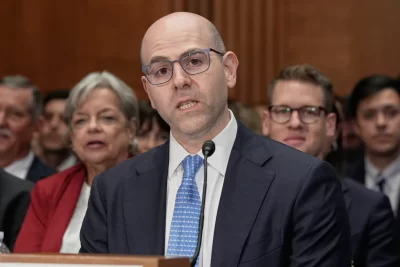
Shrugging off higher interest rates, America’s consumers spent enough to help drive the economy to a brisk 5.2% annual pace from July through September, the government reported Wednesday in an upgrade from its previous estimate.
The government had previously estimated that the economy grew at a 4.9% annual rate last quarter.
Wednesday’s second estimate of growth for the July-September quarter confirmed that the economy sharply accelerated from its 2.1% rate from April through June. It showed that the U.S. gross domestic product — the total output of goods and services — grew at its fastest quarterly rate in nearly two years.
Consumer spending, the lifeblood of the economy, rose at a 3.6% annual rate from July through September — still healthy but a downgrade from the previous estimate of 4%. Private investment surged at a 10.5% annual pace, including a 6.2% increase in housing investment, which defied higher mortgage rates.
The economy also received a lift from companies building inventories in anticipation of future sales, which added 1.4 percentage points to quarterly growth. Also driving the third quarter growth was an uptick in spending and investment by governments at all levels — federal, state and local.
The U.S. job market is cooling from the red-hot levels of the past two years. But it’s still healthy by historical standards: Employers are adding an average of 239,000 jobs a month this year. And the unemployment rate has come in below 4% for 21 straight months, the longest such streak since the 1960s.
The combination of easing inflation and resilient hiring has raised hopes the Fed can manage a so-called soft landing — raising rates just enough to cool the economy and tame price increases without tipping the economy into recession.
“We continue to forecast ongoing expansion in economic activity, but the pace should slow quite significantly” in the current fourth quarter),’’ said Rubeela Farooqi, chief U.S. economist at High Frequency Economics. ”We anticipate a deceleration in household spending, not only on payback for an unusually strong third quarter but also from the cumulative effects of monetary policy tightening.’’




